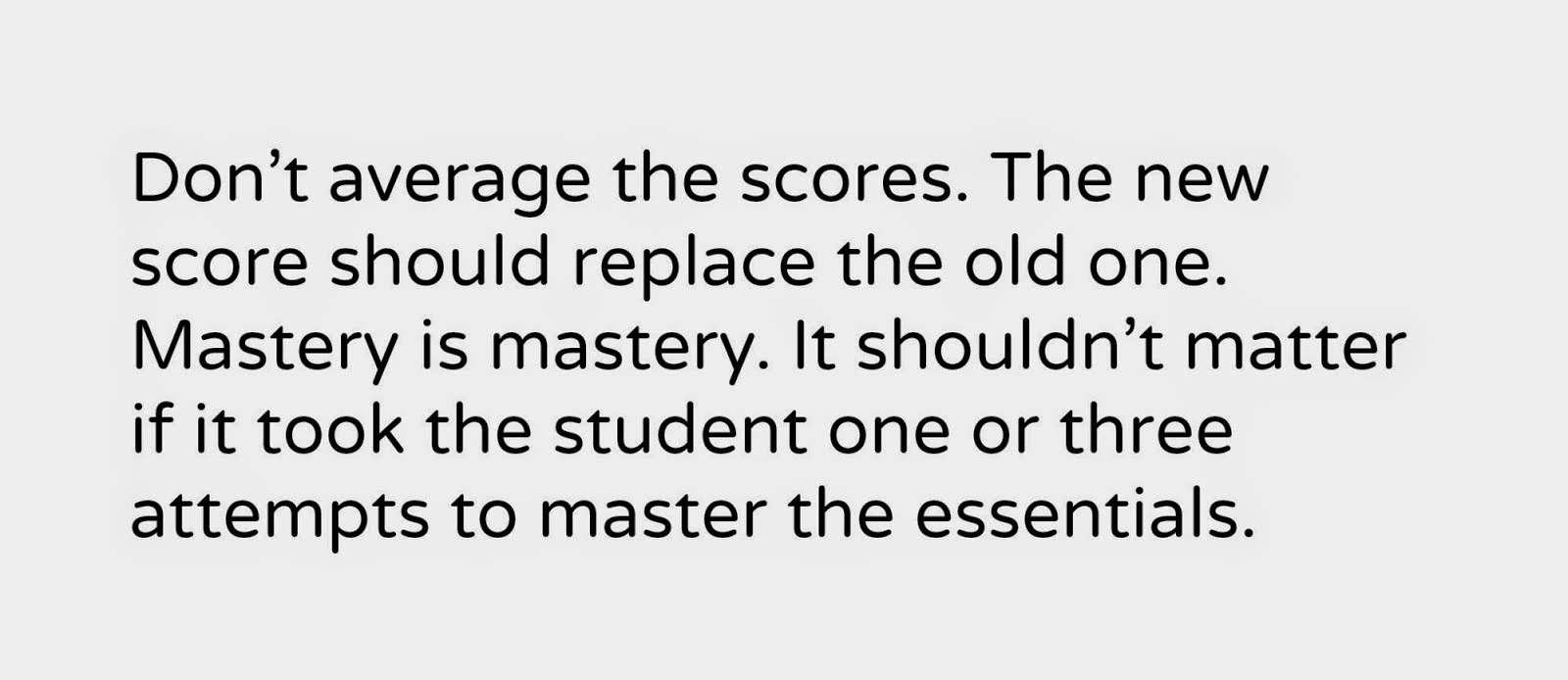Well, first of all, we need to agree on this:
We also need to believe that each student has a right to a grade that accurately and correctly depicts what a kid knows...
We must also agree that a kid doing redos and retakes on the SAME EXACT assignment/assessment WITHOUT participating in some kind of a 'relearn' process is a waste of time.
What about a request to retest document...
You might even like this 'relearn' document: http://goo.gl/P3ce3R
What does my student need to do in order to be reassessed?
After completing an assessment in a standards-based class, the student can ask for a reassessment using the process described below.
1. The student gets a copy of the reassessment agreement from the teacher and completes the “Standards to Reassess” section to choose what standards the student wants to be reassessed on and at what levels.
2. The student completes the “Preparation Information” by picking a few activities that would help with relearning the material. The student then arranges a meeting with the teacher to discuss the agreement. The teacher may require specific activities to prepare for the reassessment, such as completing missing assignments. Any activities selected by the student or teacher must have evidence that it has been completed.
3. Together, the student and teacher will decide when, where, and how the student will be reassessed in the “Reassessment Information” section.
4. Once all of the relearning activities have been completed, the student will show the necessary evidence to the teacher, and both the teacher and student will sign the “Reassessment Approval” section of the agreement.
5. The student is now ready to be reassessed as described in the “Reassessment Information” section. The reassessment agreement supports your student’s learning by:
- Ensuring that relearning takes place before reassessment.
- Identifying the specific steps the student must complete to be reassessed.
- Clarifying the reassessment process for both the student and the teacher.
- Identifying exactly how the student will be reassessed so there are no surprises.
Or even this one: http://goo.gl/nZEVML
You could also take a moment to read what @rickwormeli2 thinks about 'redos and retakes done right.'
@rggillespie has some great thoughts on this topic as well: http://goo.gl/CcfZwH
And, if you need more of Rick Wormeli, check out these two videos:














